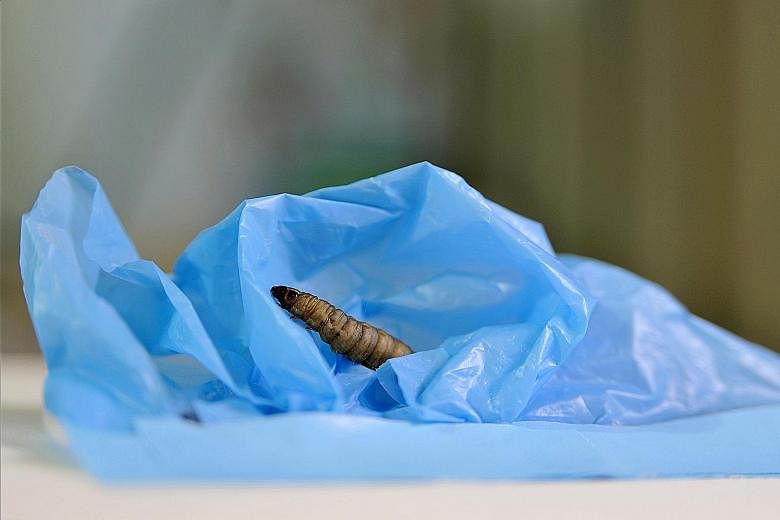PARIS • A moth caterpillar commonly bred to provide fish bait has been found to feast on a notoriously resistant plastic, raising hopes the creature can help manage plastic bag pollution.
The discovery could help get rid of the polyethylene plastic waste accumulated in landfill sites and oceans, said Cambridge University professor Paolo Bombelli, co-author of a study published on Monday in the journal Current Biology.
The scientists placed hundreds of the small, yellowish creatures on top of a supermarket plastic bag. Within 40 minutes, holes began to form. Twelve hours later, the caterpillars had consumed 92mg of the stuff, far swifter than fungus and bacteria would have taken.
The promising discovery centres on the wax worm - the name for the caterpillar larva of Galleria mellonella, or greater wax moth. In its pre-caterpillar form, the species is commercially raised as maggots to provide fish bait and aquarium food.
But the moth is also the scourge of apiculture, laying its eggs in the precious honeycomb of beehives.
The discovery happened by accident at the home of the study's lead author, Dr Federica Bertocchini, a biologist at the Institute of Biomedicine and Biotechnology of Cantabria in Spain. She keeps beehives as a hobby.
"When I went to clean them for reuse in the spring, they were infested with (wax) worms. So I put them in a bag. Then, after a while, I saw the bag was full of holes and these caterpillars were crawling all around my place," she said.
Dr Bertocchini and a team from Cambridge University decided to find out just how much, and how quickly, the pests could consume environmentally harmful plastic.
"The caterpillar produces something that breaks the chemical bond, perhaps in its salivary glands or a symbiotic bacteria in its gut," said Dr Bertocchini.
Even covering a plastic bag with mashed-up caterpillars produced a similar result, suggesting an enzyme or some other compound was at work.
AGENCE FRANCE-PRESSE

